| Representative | Party | Term | Cong
ress | Electoral history |
|---|
| District established March 4, 1789 |
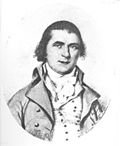
Andrew Moore
(Lexington) | Anti-Administration | March 4, 1789 –
March 3, 1793 | 1st
2nd | Elected in 1789.
Re-elected in 1790.
Redistricted to the 2nd district . |
Joseph Neville
(Moorefield) | Anti-Administration | March 4, 1793 –
March 3, 1795 | 3rd | Elected in 1793.
Lost re-election. |
| George Jackson | Democratic-Republican | March 4, 1795 –
March 3, 1797 | 4th | Elected in 1795.
Lost re-election. |
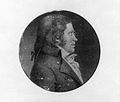
James Machir | Federalist | March 4, 1797 –
March 3, 1799 | 5th | Elected in 1797.
Retired. |
| George Jackson | Democratic-Republican | March 4, 1799 –
March 3, 1803 | 6th
7th | Elected in 1799.
Re-elected in 1801.
Redistricted to the 1st district and retired. |

John Smith
(Winchester) | Democratic-Republican | March 4, 1803 –
March 3, 1815 | 8th
9th
10th
11th
12th
13th | Redistricted from the 1st district and re-elected in 1803.
Re-elected in 1805.
Re-elected in 1807.
Re-elected in 1809.
Re-elected in 1811.
Re-elected in 1813.
Retired. |

Henry S. Tucker
(Winchester) | Democratic-Republican | March 4, 1815 –
March 3, 1819 | 14th
15th | Elected in 1815.
Re-elected in 1817.
Retired. |
Jared Williams
(Newton) | Democratic-Republican | March 4, 1819 –
March 3, 1823 | 16th
17th | Elected in 1819.
Re-elected in 1821.
Redistricted to the 17th district . |

William S. Archer
(Elk Hill) | Democratic-Republican | March 4, 1823 –
March 3, 1825 | 18th
19th
20th
21st
22nd
23rd | Redistricted from the 17th district and re-elected in 1823.
Re-elected in 1825.
Re-elected in 1827.
Re-elected in 1829.
Re-elected in 1831.
Re-elected in 1833.
Lost re-election. |
| Jacksonian | March 4, 1825 –
March 3, 1835 |
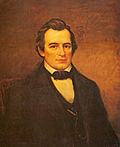
John W. Jones
(Petersburg) | Jacksonian | March 4, 1835 –
March 3, 1837 | 24th
25th
26th
27th | Elected in 1835.
Re-elected in 1837.
Re-elected in 1839.
Re-elected in 1841.
Redistricted to the 6th district . |
| Democratic | March 4, 1837 –
March 3, 1843 |
Walter Coles
(Robertsons Store) | Democratic | March 4, 1843 –
March 3, 1845 | 28th | Redistricted from the 6th district and re-elected in 1843.
Retired. |
William M. Tredway
(Danville) | Democratic | March 4, 1845 –
March 3, 1847 | 29th | Elected in 1845.
Lost re-election. |
Thomas S. Flournoy
(Halifax) | Whig | March 4, 1847 –
March 3, 1849 | 30th | Elected in 1847.
Lost re-election. |
Thomas H. Averett
(Halifax) | Democratic | March 4, 1849 –
March 3, 1853 | 31st
32nd | Elected in 1849.
Re-elected in 1851.
Lost re-election. |

John S. Caskie
(Richmond) | Democratic | March 4, 1853 –
March 3, 1859 | 33rd
34th
35th | Redistricted from the 6th district and re-elected in 1853.
Re-elected in 1855.
Re-elected in 1857.
Lost re-election. |

Daniel C. DeJarnette Sr.
(Bowling Green) | Independent Democratic | March 4, 1859 –
March 3, 1861 | 36th | Elected in 1859.
Resigned. |
| District inactive | March 4, 1861 –
January 27, 1870 | 37th
38th
39th
40th | Civil War and Reconstruction |

Charles H. Porter
(Richmond) | Republican | January 27, 1870 –
March 3, 1873 | 41st
42nd | Elected in 1870.
Retired. |

John A. Smith
(Richmond) | Republican | March 4, 1873 –
March 3, 1875 | 43rd | Elected in 1872.
Lost re-election. |

Gilbert C. Walker
(Richmond) | Democratic | March 4, 1875 –
March 3, 1879 | 44th
45th | Elected in 1874.
Re-elected in 1876.
Retired. |

Joseph E. Johnston
(Longwood) | Democratic | March 4, 1879 –
March 3, 1881 | 46th | Elected in 1878.
Retired. |
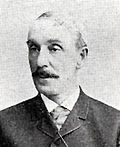
George D. Wise
(Richmond) | Democratic | March 4, 1881 –
April 11, 1890 | 47th
48th
49th
50th
51st | Elected in 1880.
Re-elected in 1882.
Re-elected in 1884.
Re-elected in 1886.
Election invalidated. |

Edmund Waddill Jr.
(Richmond) | Republican | April 12, 1890 –
March 3, 1891 | 51st | Elected in 1890.
Retired. |

George D. Wise
(Richmond) | Democratic | March 4, 1891 –
March 3, 1895 | 52nd
53rd | Elected in 1890.
Re-elected in 1892.
Retired. |

Tazewell Ellett
(Richmond) | Democratic | March 4, 1895 –
March 3, 1897 | 54th | Elected in 1894.
Lost re-election. |

John Lamb
(Richmond) | Democratic | March 4, 1897 –
March 3, 1913 | 55th
56th
57th
58th
59th
60th
61st
62nd | Elected in 1896.
Re-elected in 1898.
Re-elected in 1900.
Re-elected in 1902.
Re-elected in 1904.
Re-elected in 1906.
Re-elected in 1908.
Re-elected in 1910.
Lost re-election. |
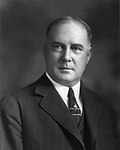
Andrew J. Montague
(Richmond) | Democratic | March 4, 1913 –
March 3, 1933 | 63rd
64th
65th
66th
67th
68th
69th
70th
71st
72nd | Elected in 1912.
Re-elected in 1914.
Re-elected in 1916.
Re-elected in 1918.
Re-elected in 1920.
Re-elected in 1922.
Re-elected in 1924.
Re-elected in 1926.
Re-elected in 1928.
Re-elected in 1930.
Redistricted to the at-large seat . |
| District inactive | March 4, 1933 –
January 3, 1935 | 73rd | |

Andrew J. Montague
(Richmond) | Democratic | January 3, 1935 –
January 24, 1937 | 74th
75th | Elected in 1934.
Re-elected in 1936.
Died. |
| Vacant | January 24, 1937 –
November 2, 1937 | 75th | |

David E. Satterfield Jr.
(Richmond) | Democratic | November 2, 1937 –
February 15, 1945 | 75th
76th
77th
78th
79th | Elected to finish Montague's term.
Re-elected in 1938.
Re-elected in 1940.
Re-elected in 1942.
Resigned. |
| Vacant | February 15, 1945 –
March 6, 1945 | 79th | |

J. Vaughan Gary
(Richmond) | Democratic | March 6, 1945 –
January 3, 1965 | 79th
80th
81st
82nd
83rd
84th
85th
86th
87th
88th | Elected to finish Satterfield's term.
Re-elected in 1944.
Re-elected in 1946.
Re-elected in 1948.
Re-elected in 1950.
Re-elected in 1952.
Re-elected in 1954.
Re-elected in 1956.
Re-elected in 1958.
Re-elected in 1960.
Re-elected in 1962.
Retired. |
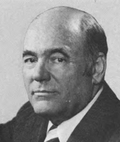
David E. Satterfield III
(Richmond) | Democratic | January 3, 1965 –
January 3, 1981 | 89th
90th
91st
92nd
93rd
94th
95th
96th | Elected in 1964.
Re-elected in 1966.
Re-elected in 1968.
Re-elected in 1970.
Re-elected in 1972.
Re-elected in 1974.
Re-elected in 1976.
Re-elected in 1978.
Retired. |

Thomas J. Bliley Jr.
(Richmond) | Republican | January 3, 1981 –
January 3, 1993 | 97th
98th
99th
100th
101st
102nd | Elected in 1980.
Re-elected in 1982.
Re-elected in 1984.
Re-elected in 1986.
Re-elected in 1988.
Re-elected in 1990.
Redistricted to the 7th district . |

Robert C. Scott
(Newport News) | Democratic | January 3, 1993 –
present | 103rd
104th
105th
106th
107th
108th
109th
110th
111th
112th
113th
114th
115th
116th
117th
118th
119th | Elected in 1992.
Re-elected in 1994.
Re-elected in 1996.
Re-elected in 1998.
Re-elected in 2000.
Re-elected in 2002.
Re-elected in 2004.
Re-elected in 2006.
Re-elected in 2008.
Re-elected in 2010.
Re-elected in 2012.
Re-elected in 2014.
Re-elected in 2016.
Re-elected in 2018.
Re-elected in 2020.
Re-elected in 2022.
Re-elected in 2024. |



























